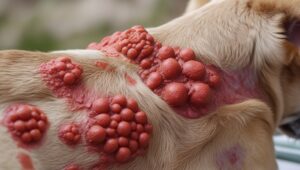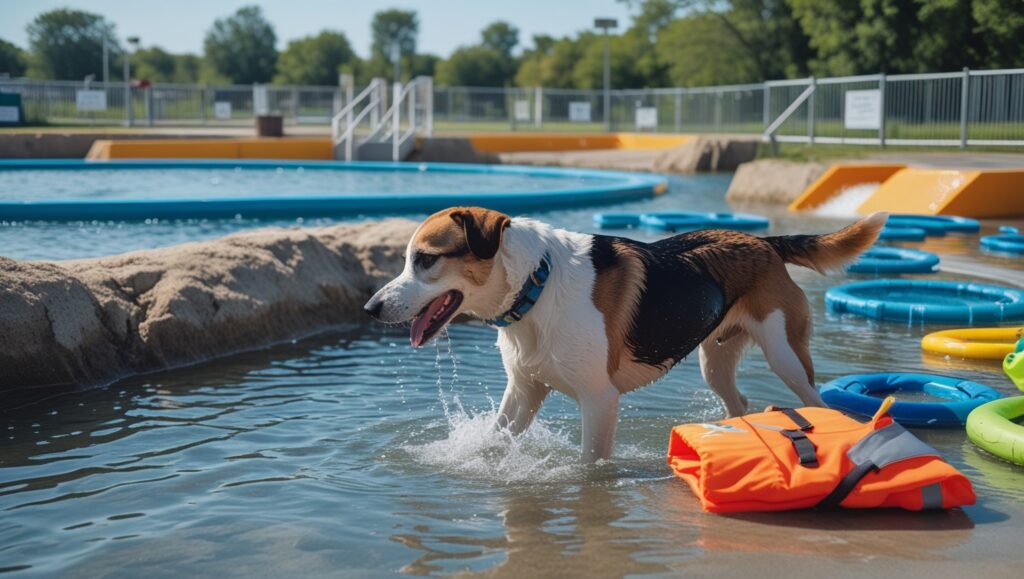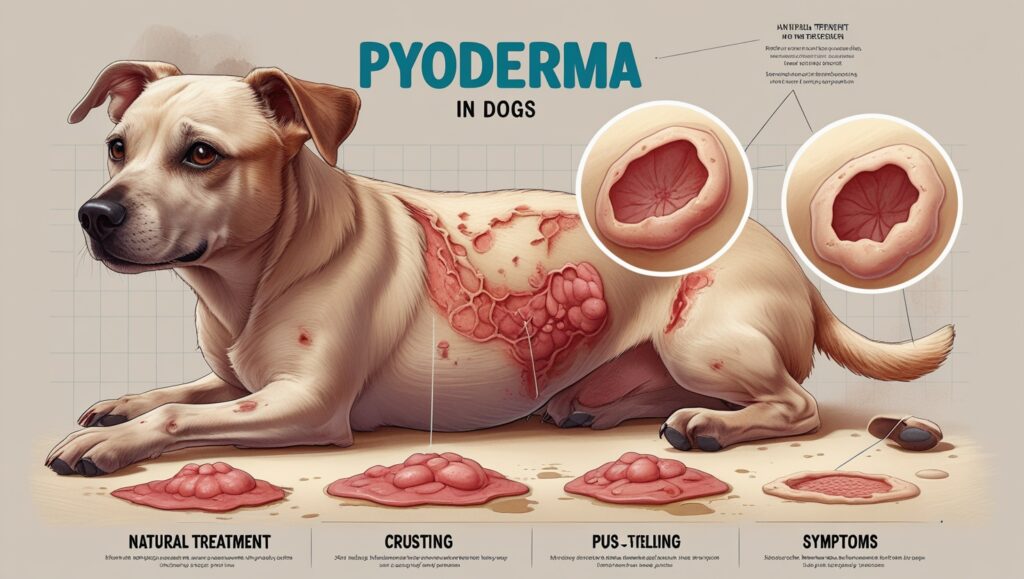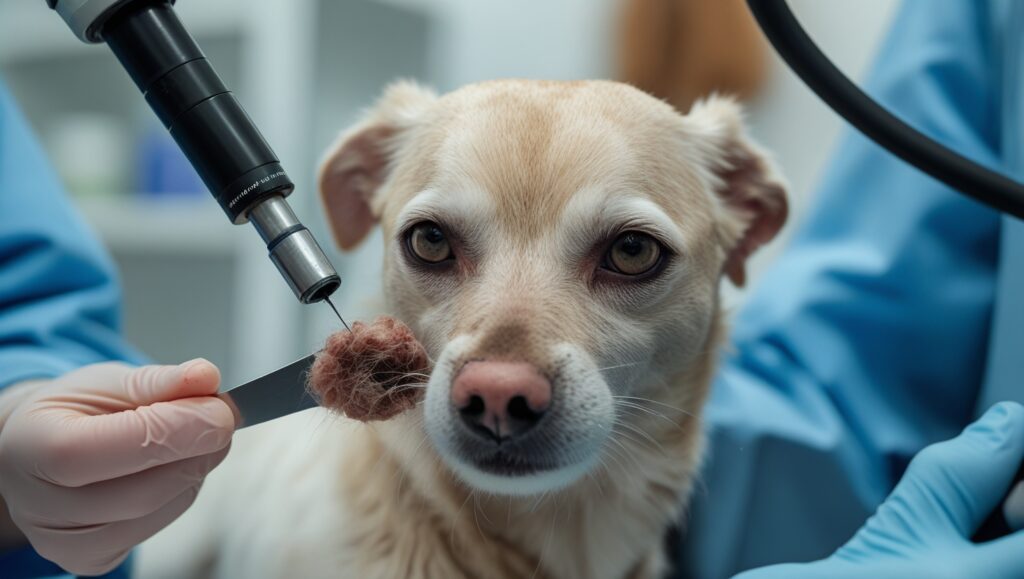Introduction
Chances are, when you are looking at pictures of pyoderma in dogs, you have already spotted red bumps, crusts, or sores on the skin of your pet. Pyoderma is a common bacterial skin infection that can affect any dog, including older ones. In this article, we will display what pyoderma looks like, what causes the pyoderma, and reveal a treatment that is not harsh and still effective.

What is dog Pyoderma?
The presence of pus in the skin is referred to as pyoderma. This is a bacteria-caused infection that is accompanied by swelling/inflammation, sores, and pustules. The condition may be either superficial, with only the top parts of the skin getting affected, or deep when it strikes the hair follicles.
It can be found as
- Bumps that are reddish or pustule-like, pseudo-pimples.
- Irregular, crusty ulcers.
- Scalp baldness in the localized sites.
- Skin that is itchy or hurts.
- Bleeding sores or bleeding sores.
Mistakenly, the majority of pet parents identify it with allergies, insect bites, or hot spots, and this is why one should be aware of the appearance of pyoderma.
What Do Pyoderma Dog Pictures Depict?
These visual manifestations are different, but the majority of the photos of the dog pyoderma show:
- Scabby and red circles may appear around the belly or the groin.
- Dark bumps filled with pus.
- Spots where fur is missing or is matted.
- Several lesions are clustering, particularly on the back, the face, or the paws.
Such images can be a good guideline, yet a diagnosis is still to be made by a vet, even in cases where the symptoms increase.
What is the Cause of Pyoderma in Dogs?
Several predisposing factors could cause this skin infection. The most widespread ones are
1. Mites or fleas
Flea or mange mite bites can make the skin irritated and allow the entry of bacteria.
2. Skin Allergies
Food allergies or allergies to the environment sensitize the skin to infection, and in both conditions, the barrier on the skin is softened.
3. Endocrine Disorders
Such ailments as hypothyroidism or Cushing’s disease suppress the immune system and cause chronic skin disorders.
4. Dampness or poor Hygiene
Raised levels of exposure to moisture during swimming or the absence of grooming may cause the development of bacteria.
Kinds of Pyoderma
They are divided into various forms in terms of the depth of infection:
- Surface Pyoderma: Deals with the most delicate parts of the skin (it is usually mild in nature, itchy, and red).
- Superficial Pyoderma: It involves the hair follicles and, as a result, pustules, crusts, and scabbing develop.
- Deep Pyoderma: A more serious condition and is characterized by bleeding sores, swelling, and a lot of pain.
Homeopathic Remedies for Pyoderma
In the mild or early stage of the condition, these home remedies can calm down and treat the skin of your dog:
1. Manuka Honey
Use it lightly only on the infected parts; it is antibacterial and creates healing.
2. Aloe Vera Gel
Lowers itching and cures the skin. And do not use aloe.
3. Coconut Oil
Skin application is to restrict bacteria and flesh.
4. Rinse Apple Cider Vinegar
Mix with water in a ratio of 50:50 and spray lightly on the infected skin. Not to be used with open wounds.
Caution: A Patch test should be tried. In the cases of moderate to severe circumstances, speak to your vet to get suitable antibiotics or medicated shampoos.
The prevention of Pyoderma in the future
It is easier to prevent it rather than to treat it in case you have a dog that is susceptible to skin problems. This is what you may do:

- Wash infrequently with dog-friendly shampoo.
- Towel dry all dogs following baths and swimming.
- Repair the bedding, moist and clean.
- Make it a habit to examine your pet to see whether or not there are fleas, ticks, or mites.
- Eat healthy foods that contain Omega-3 fatty acids to gain an advantage for your skin.
- Deal with allergies at the initial stage.
When Is It Needed to Visit the Vet?
Natural cures are useful, whereas vet care is necessary in cases when:
- The effects of symptoms do not take 3-5 days to improve.
- Lesions are spreading or going out.
- Your dog is painful, reticent, or feels feverish.
- There is excessive hair fall or the thickening of skin.
Depending on the cause and level of severity, a vet can prescribe antibiotics, antifungal drugs, or medicated baths.
Breeds that are Prone to Developing Pyoderma
All dogs are susceptible to pyoderma development, but certain breeds are more likely because of their folds of skin or allergies and administration requirements. These include:

- Bulldogs & Pugs: Facial folds and retention of moisture
- Golden Retrievers and Labradors are usually allergic.
- Shar-Peis: Deep folds on the skin provide an excellent bacterial growth environment.
- Dachshund and Basset Hound: These are most likely to have imbalanced hormones and infection.
- German Shepherds may develop deep pyoderma without any form of treatment.
When keeping one of such breeds, check-ups about skin conditions and general hygiene are of particular importance.
Final Thoughts
Pyoderma is not only excruciating to your dog, but it is also very easy to treat when noticed in its early stages. Being aware of the symptoms, familiar with what pictures of pyoderma in dogs look like, and having a soft and knowledgeable approach toward treatment may be all the difference. With regular attention and good hygiene, you are capable of getting your dog out of the misfortune rapidly and avoiding future infections.
FAQs
1. Can you transmit pyoderma in dogs?
No, pyoderma does not tend to be contagious in other pets or to people. It is a result of already existing bacteria on the skin of the dog.
2. Does pyoderma resolve itself?
In mild cases, some proper hygiene may be used to clear it, although most dogs require some kind of therapy in order to prevent exacerbation.
3. Is it possible to pop the pustules on the skin of my dog?
No. This can not only spread the infection but also increase the inflammation. Allow the skin to heal,l or get the skin healed under vet care.








Pingback: 9 Common Types of Dog Skin Diseases with Pictures